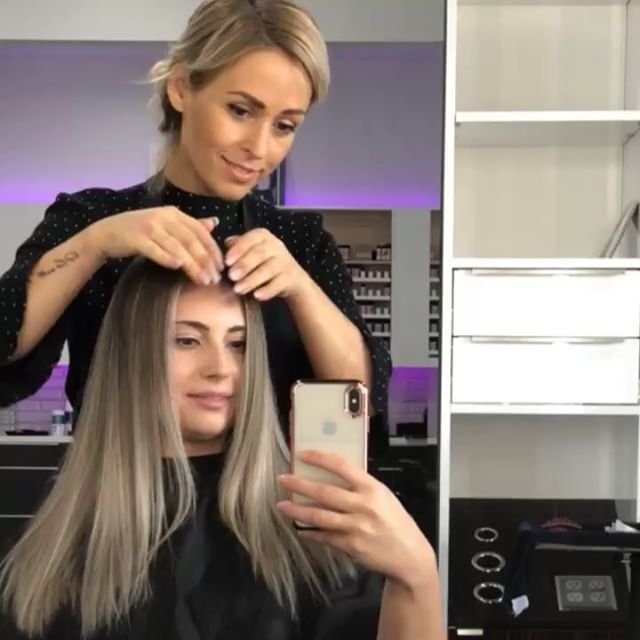

If you have all-over red hair, you can make the red color pop by choosing another color one shade darker.Here is an example of how this would work: To add complexity to your color, simply choose a lowlight color 1-2 levels darker and typically of a slightly different tone than your base color. Sure everyone knows about highlights, but what about lowlights? Lowlights can add gorgeous depth and dimension. You need: Your pre-selected darker shade, foil or plastic wrap, bowl and brush You want: To make pieces pop by adding slightly darker tones You have: Dark blonde to medium brown color-treated hair Allow to process fully 35 minutes before shampooing out as normal.Ĭreating Lowlights (darker pieces) in Uniformly Color Treated Hair.Use the color tint brush to alternate painting the two colors on various sections of hair.

Then, take small panels of hair and paint the variation of color onto those select small sections, painting right up to the area where the root color ends.

The foil keeps the lightener from getting on the surrounding hair, and also traps heat, allowing the lightener to lift more effectively. Highlights are traditionally applied using a method called “foiling,” in which sheets of foil are used to separate strands of hair that have been covered with a color or lightener before wrapping them in the foil to process. Contrary to popular belief, highlights are not just for blondes, but can refer to lightening strands of any shade of hair. Highlights is a general term that simply refers to hair that is lighter than the base color. What is the difference between Highlights and Balayage?

Due to the customized, natural-looking placement, balayage also allows for a softer grow out. There are different application nuances that produce slightly varied results, but the main reason balayage has become so popular is that it allows colorists to hand select the pieces of hair they want to highlight. Of course, there are variations in application preferences: some colorists don’t separate the hair, while others separate the hair with cotton pieces, and others prefer using foil as a divider. This natural-looking highlighting technique is not just for blondes, but is actually used on all shades of hair to add soft, sunkissed dimension. The result is the look of summers spent at the beach, or the fresh, unintentionally perfect highlights on a child. Balayage is the technique of free-hand painting highlights onto the hair, creating a soft and natural gradation of lightness towards the ends. Pronounced BAH-LEE-AHGE, balayage is actually a French word meaning ‘sweeping,’ as in to sweep on a hair lightener to create highlights.


 0 kommentar(er)
0 kommentar(er)
